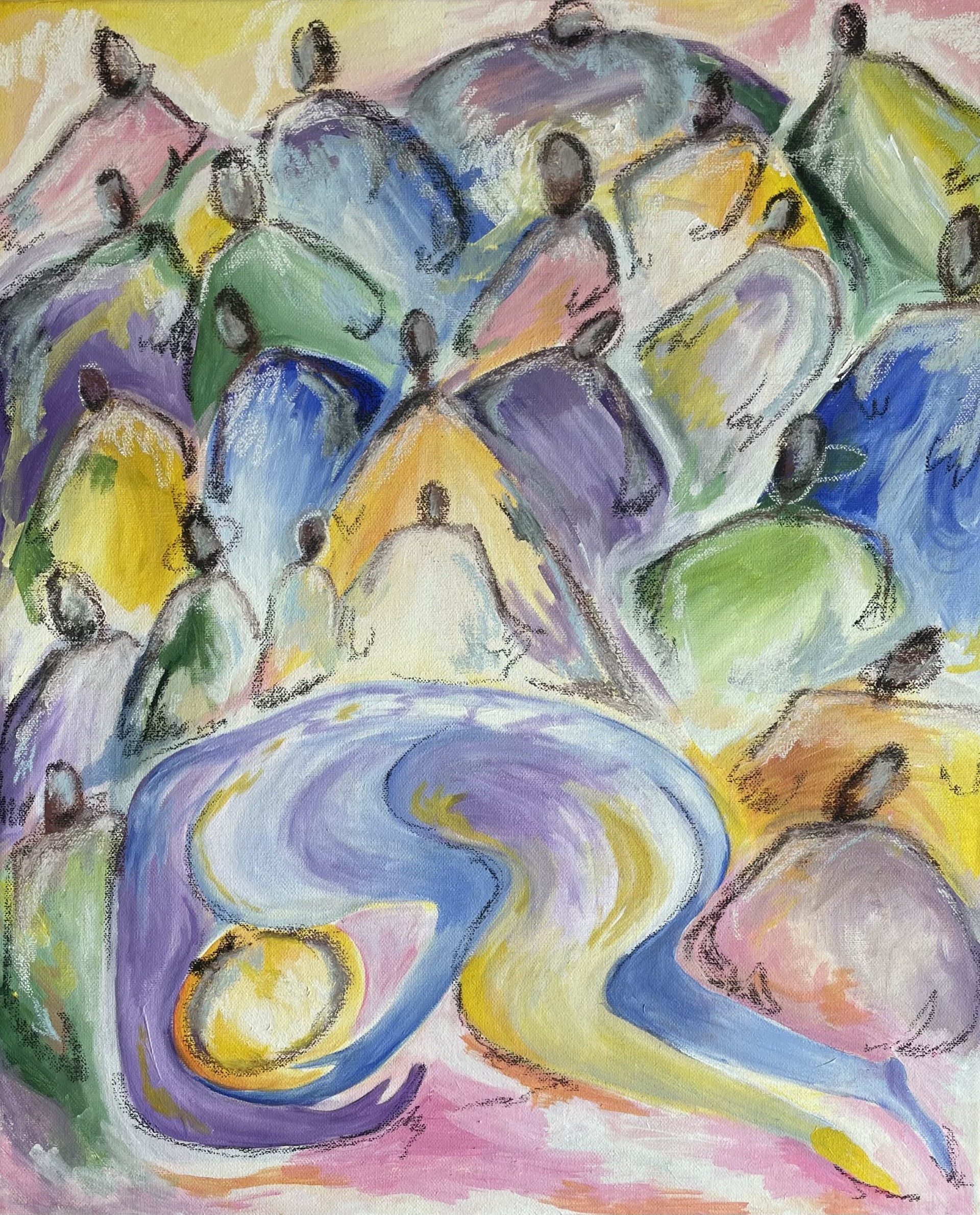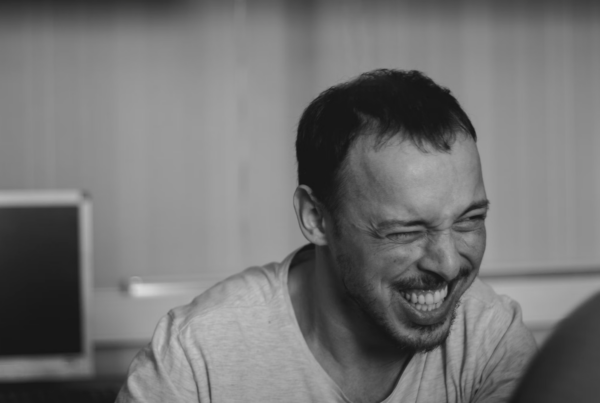
Are crowds forces of disorder, unpredictable and dangerous? Or are they governed by hidden patterns and structured systems that we simply fail to recognize? At first glance, what may seem like anarchy is a phenomenon shaped by psychological and physical principles.
Are crowds forces of disorder, unpredictable and dangerous? Or are they governed by hidden patterns and structured systems that we simply fail to recognize? At first glance, what may seem like anarchy is a phenomenon shaped by psychological and physical principles.

Photo by Natalia Pribylova

Photo by Natalia Pribylova
There is something both exhilarating and unsettling about being in a crowd. Whether it’s the deafening roar of thousands chanting in protest, the synchronized sway of bodies at a concert, or the suffocating press of people in a packed street, crowds hold an undeniable power. They can change history, overthrow governments, and spark movements that ripple across the globe. But they can also quickly turn from peaceful gatherings to complete chaos.
When individuals unite into a collective group, they gain immense power that no single person could ever hold alone. Throughout history, crowds have been at the heart of political and social movements, fueling some of the most defining moments of our time. The fall of the Berlin Wall in 1989 was accelerated by masses of people pressuring soldiers at the border crossings. More recently, in 2020, the tragic killing of George Floyd led to millions taking to the streets under the Black Lives Matter movement, not just in the United States, but across the world. However, this power does not always result in positive outcomes. Back in 2022 in Itaewon (Seoul), where more than ten thousand people gathered to celebrate Halloween, the crowd abruptly collapsed. A newspaper article reports that around 150 people were killed and many more injured due to uncontrollable pushing and shoving. The cause of this, reportedly, is that ‘chaos suddenly erupted’ in the crowd (Harrison & Earl, 2022).
“Why do we need harmony in the first place?”
Events like the Itaewon disaster serve as stark reminders that large crowds can pose serious safety risks. Their behaviour is often unpredictable, and the behaviour of a single individual can set off a domino effect, creating a reaction that is wildly disproportionate to the initial action. The interpretation of crowds as eruptive and uncontrollable has made them widely associated with chaos. But how justified is this view?
Historically, the study of crowds emerged not because they were chaotic but because they were effective. Revolts, uprisings, and movements of the lower classes in the face of societal unrest demonstrated the power of collective action and its lasting impact. Take the U.S. Civil Rights Movement, for example. This movement led to institutional changes (Civil Rights Act) and long-lasting effects on people’s political attitudes, with counties where protests occurred still being more Democratic today (Mazumder, 2018). This power to change attitudes and values is also what makes protests one of the most powerful democratic tools available to the public. The first scientific inquiries into crowd dynamics date back to the late 19th century, with thinkers like Gustave Le Bon (The Crowd, 1896) seeking to understand the psychological mechanisms at play. However, it wasn’t until the 1970s that crowd science developed methodological rigor (Amos et al., 2024). One of the most influential early theories on crowd behavior came from Philip Zimbardo, whose work on deindividuation suggested that individuals in a crowd lose their sense of self, becoming anonymous members of the collective (Mann et al., 1982). Deindividuation, he argued, led to aggression and irrational behavior. While influential, this theory primarily focuses on a crowd’s aggressive potential and does not take social context into account. However, context matters. Protesters fighting for democracy in an oppressive regime will not behave the same way as people attending a Taylor Swift concert.
“If people are conforming less with social norms, yet harmony has increased, it indicates that humans don't need to follow certain rules to find happiness.”
More contemporary research supports this view, with studies suggesting that most crowds are structured, rule-governed, and nonviolent (Drury, 2020). Recent physics research has illustrated that patterns emerge in seemingly chaotic crowds. The study, which analyzed crowd behavior at a Spanish festival, revealed that dense crowds naturally form swirling, wave-like movements (Tordeux, 2025). These oscillations are clearly visible in sped-up footage, demonstrating that crowd motion follows identifiable physical principles. Rather than seeing crowds as unpredictable and uncontrollable, we should recognize them as complex systems governed by underlying rules. Studies investigating the social psychology of crowds also indicate that specific, known factors can determine whether a crowd remains peaceful or becomes violent. One key factor is the rapid spread of emotions within a crowd; when emotions become antagonistic (towards other protesters, authorities etc.), the likelihood of escalation increases (Li et al., 2019). A review by Bliss et al. (2004) further identified several potential ‘Universal Triggers for Crowd Violence.’ Among the most significant are the presence of weapons, the use of drugs and alcohol, strong commitment among crowd members, and a sense of desperation within the crowd.
Crowds are somewhat misunderstood. However, contemporary research is starting to shine a light on new ways to understand them. Most importantly, they are not simply an uncontrollable force of chaos but are structured and, in some ways, predictable. <<
References
- Amos, M., Gainer, P., Gwynne, S., & Templeton, A. (2024). A dynamic state-based model of crowds. Safety Science, 175, 106522. https://doi.org/10.1016/j.ssci.2024.106522
- Bliss, J. P., Fallon, C., Headen, N., & Gaskins, R. C. (2004). Crowd reactions to Sublethal weapons: Universal triggers for Crowd violence. Proceedings of the Human Factors and Ergonomics Society Annual Meeting, 48(22), 2543–2547. https://doi.org/10.1177/154193120404802207
- Drury, J. (2020). Recent developments in the psychology of crowds and collective behaviour. Current Opinion in Psychology, 35, 12–16. https://doi.org/10.1016/j.copsyc.2020.02.005
- Harrison, V., & Earl, C. (2022, November 1). A visual guide to how the Seoul Halloween crowd crush unfolded. The Guardian. https://www.theguardian.com/world/2022/oct/31/how-did-the-seoul-itaewon-halloween-crowd-crush-happen-unfolded-a-visual-guide
- Li, C., Lv, P., Manocha, D., Wang, H., Li, Y., Zhou, B., & Xu, M. (2019). ACSEE: Antagonistic crowd simulation model with emotional contagion and evolutionary game theory. IEEE Transactions on Affective Computing, 13(2), 729–745. https://doi.org/10.1109/taffc.2019.2954394
- Mann, L., Newton, J. W., & Innes, J. M. (1982). A test between deindividuation and emergent norm theories of crowd aggression. Journal of Personality and Social Psychology, 42(2), 260–272. https://doi.org/10.1037/0022-3514.42.2.260
- Mazumder, S. (2018). The persistent effect of U.S. civil rights protests on political attitudes. American Journal of Political Science, 62(4), 922–935. https://doi.org/10.1111/ajps.12384
- Tordeux, A. (2025). Crowds start to spin when their densities hit a threshold. Nature, 638(8049), 41–42. https://doi.org/10.1038/d41586-025-00036-z
There is something both exhilarating and unsettling about being in a crowd. Whether it’s the deafening roar of thousands chanting in protest, the synchronized sway of bodies at a concert, or the suffocating press of people in a packed street, crowds hold an undeniable power. They can change history, overthrow governments, and spark movements that ripple across the globe. But they can also quickly turn from peaceful gatherings to complete chaos.
When individuals unite into a collective group, they gain immense power that no single person could ever hold alone. Throughout history, crowds have been at the heart of political and social movements, fueling some of the most defining moments of our time. The fall of the Berlin Wall in 1989 was accelerated by masses of people pressuring soldiers at the border crossings. More recently, in 2020, the tragic killing of George Floyd led to millions taking to the streets under the Black Lives Matter movement, not just in the United States, but across the world. However, this power does not always result in positive outcomes. Back in 2022 in Itaewon (Seoul), where more than ten thousand people gathered to celebrate Halloween, the crowd abruptly collapsed. A newspaper article reports that around 150 people were killed and many more injured due to uncontrollable pushing and shoving. The cause of this, reportedly, is that ‘chaos suddenly erupted’ in the crowd (Harrison & Earl, 2022).
“Why do we need harmony in the first place?”
Events like the Itaewon disaster serve as stark reminders that large crowds can pose serious safety risks. Their behaviour is often unpredictable, and the behaviour of a single individual can set off a domino effect, creating a reaction that is wildly disproportionate to the initial action. The interpretation of crowds as eruptive and uncontrollable has made them widely associated with chaos. But how justified is this view?
Historically, the study of crowds emerged not because they were chaotic but because they were effective. Revolts, uprisings, and movements of the lower classes in the face of societal unrest demonstrated the power of collective action and its lasting impact. Take the U.S. Civil Rights Movement, for example. This movement led to institutional changes (Civil Rights Act) and long-lasting effects on people’s political attitudes, with counties where protests occurred still being more Democratic today (Mazumder, 2018). This power to change attitudes and values is also what makes protests one of the most powerful democratic tools available to the public. The first scientific inquiries into crowd dynamics date back to the late 19th century, with thinkers like Gustave Le Bon (The Crowd, 1896) seeking to understand the psychological mechanisms at play. However, it wasn’t until the 1970s that crowd science developed methodological rigor (Amos et al., 2024). One of the most influential early theories on crowd behavior came from Philip Zimbardo, whose work on deindividuation suggested that individuals in a crowd lose their sense of self, becoming anonymous members of the collective (Mann et al., 1982). Deindividuation, he argued, led to aggression and irrational behavior. While influential, this theory primarily focuses on a crowd’s aggressive potential and does not take social context into account. However, context matters. Protesters fighting for democracy in an oppressive regime will not behave the same way as people attending a Taylor Swift concert.
“If people are conforming less with social norms, yet harmony has increased, it indicates that humans don't need to follow certain rules to find happiness.”
More contemporary research supports this view, with studies suggesting that most crowds are structured, rule-governed, and nonviolent (Drury, 2020). Recent physics research has illustrated that patterns emerge in seemingly chaotic crowds. The study, which analyzed crowd behavior at a Spanish festival, revealed that dense crowds naturally form swirling, wave-like movements (Tordeux, 2025). These oscillations are clearly visible in sped-up footage, demonstrating that crowd motion follows identifiable physical principles. Rather than seeing crowds as unpredictable and uncontrollable, we should recognize them as complex systems governed by underlying rules. Studies investigating the social psychology of crowds also indicate that specific, known factors can determine whether a crowd remains peaceful or becomes violent. One key factor is the rapid spread of emotions within a crowd; when emotions become antagonistic (towards other protesters, authorities etc.), the likelihood of escalation increases (Li et al., 2019). A review by Bliss et al. (2004) further identified several potential ‘Universal Triggers for Crowd Violence.’ Among the most significant are the presence of weapons, the use of drugs and alcohol, strong commitment among crowd members, and a sense of desperation within the crowd.
Crowds are somewhat misunderstood. However, contemporary research is starting to shine a light on new ways to understand them. Most importantly, they are not simply an uncontrollable force of chaos but are structured and, in some ways, predictable. <<
References
- Amos, M., Gainer, P., Gwynne, S., & Templeton, A. (2024). A dynamic state-based model of crowds. Safety Science, 175, 106522. https://doi.org/10.1016/j.ssci.2024.106522
- Bliss, J. P., Fallon, C., Headen, N., & Gaskins, R. C. (2004). Crowd reactions to Sublethal weapons: Universal triggers for Crowd violence. Proceedings of the Human Factors and Ergonomics Society Annual Meeting, 48(22), 2543–2547. https://doi.org/10.1177/154193120404802207
- Drury, J. (2020). Recent developments in the psychology of crowds and collective behaviour. Current Opinion in Psychology, 35, 12–16. https://doi.org/10.1016/j.copsyc.2020.02.005
- Harrison, V., & Earl, C. (2022, November 1). A visual guide to how the Seoul Halloween crowd crush unfolded. The Guardian. https://www.theguardian.com/world/2022/oct/31/how-did-the-seoul-itaewon-halloween-crowd-crush-happen-unfolded-a-visual-guide
- Li, C., Lv, P., Manocha, D., Wang, H., Li, Y., Zhou, B., & Xu, M. (2019). ACSEE: Antagonistic crowd simulation model with emotional contagion and evolutionary game theory. IEEE Transactions on Affective Computing, 13(2), 729–745. https://doi.org/10.1109/taffc.2019.2954394
- Mann, L., Newton, J. W., & Innes, J. M. (1982). A test between deindividuation and emergent norm theories of crowd aggression. Journal of Personality and Social Psychology, 42(2), 260–272. https://doi.org/10.1037/0022-3514.42.2.260
- Mazumder, S. (2018). The persistent effect of U.S. civil rights protests on political attitudes. American Journal of Political Science, 62(4), 922–935. https://doi.org/10.1111/ajps.12384
- Tordeux, A. (2025). Crowds start to spin when their densities hit a threshold. Nature, 638(8049), 41–42. https://doi.org/10.1038/d41586-025-00036-z



